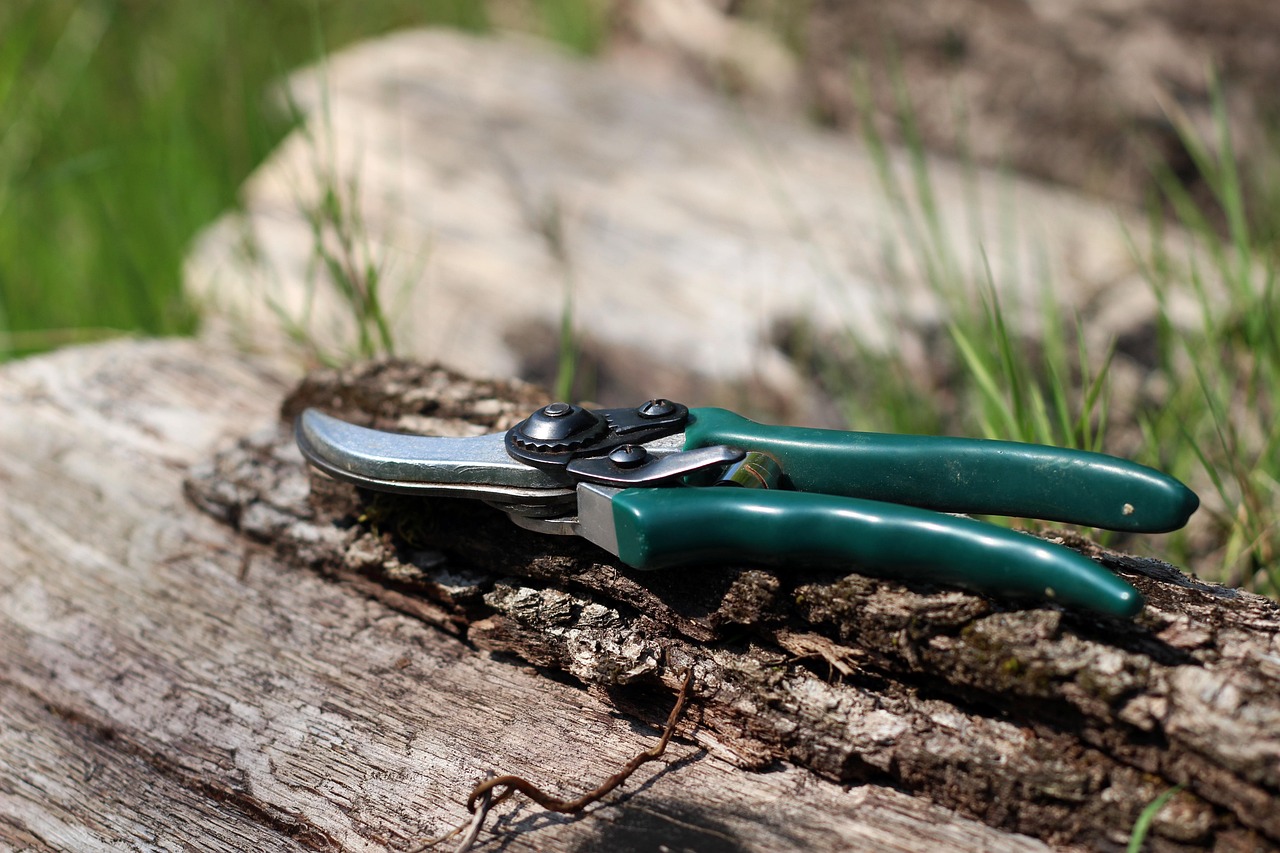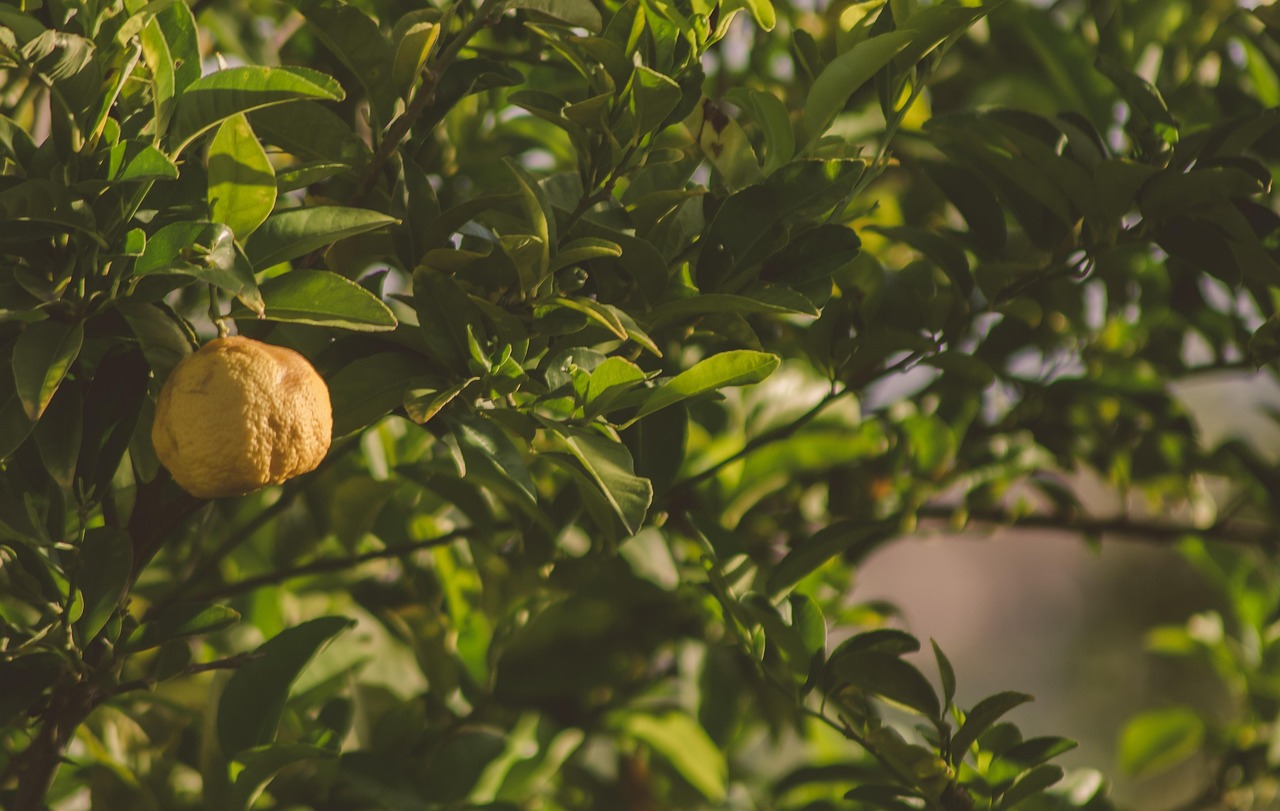Lemon grove tree pruning is essential for maximizing fruit production. Proper pruning techniques promote healthy growth, improve air circulation, and enhance sunlight exposure. This process encourages robust flowering and fruit-setting, ultimately leading to a bountiful harvest.
Lemon trees are a popular choice for home gardeners and commercial growers alike. Their bright yellow fruit is not only a culinary delight but also holds numerous health benefits. Pruning is a crucial aspect of lemon tree care that can significantly impact fruit yield. Understanding the optimal time and techniques for pruning can help ensure your lemon tree remains healthy and productive.

Pruning lemon trees involves the careful removal of specific branches and foliage to improve overall tree health. This practice helps to shape the tree, remove dead or diseased wood, and control the size of the tree. Additionally, it allows for better light penetration and air circulation, both of which are vital for optimal fruit production.
The Importance of Pruning Lemon Trees
Pruning lemon trees serves multiple purposes, each contributing to the overall vitality of the tree and its capacity to produce fruit. Below are some key benefits:
- Increased sunlight exposure: Pruning opens up the canopy, allowing sunlight to reach more leaves.
- Improved air circulation: Enhanced airflow reduces the risk of disease.
- Better fruit quality: Pruning helps in focusing the tree’s energy on fewer fruits, leading to larger and tastier lemons.
- Shape and size management: Regular pruning keeps the tree at a manageable size for easier harvesting.
Additionally, pruning can help to rejuvenate older trees that may be struggling to produce fruit. By removing crowded or unproductive branches, you can stimulate new growth and improve fruiting capacity.

Optimal Pruning Times
The timing of your pruning efforts is critical. Lemon trees can be pruned at various times throughout the year, but the most effective periods are typically late winter or early spring before new growth begins. This timing allows you to remove any dead or damaged wood while minimizing stress on the tree during its active growing season.
Another good time for light pruning is after the harvest season, which usually occurs in late summer or early fall. This practice helps prepare the tree for the next growing cycle while ensuring that it remains healthy and productive.
Pruning Techniques
There are several techniques that can be employed when pruning lemon trees. Each technique has its purpose and should be applied according to the specific needs of your tree. Here are some common methods:

- Crown thinning: This involves selectively removing branches to increase light penetration and air circulation.
- Crown reduction: This technique reduces the overall size of the tree while maintaining its shape, making harvesting easier.
- Heading back: Cutting back a branch to encourage new growth and denser foliage.
- Removing suckers: Suckers are vigorous shoots that grow from the base or along the trunk, diverting energy from fruit production.
Using sharp, clean pruning shears is essential for making clean cuts. This prevents damage to the tree and minimizes the risk of disease entering through open wounds. Always sterilize your tools before use, especially when moving between different trees.
Common Mistakes in Pruning
Even seasoned gardeners can make mistakes when pruning lemon trees. Avoiding these common pitfalls can help optimize your tree’s health and fruit production:
- Over-pruning: Removing too much foliage can stress the tree and reduce fruit yield.
- Pruning at the wrong time: Cutting during active growth can hinder production.
- Ineffective cuts: Making cuts at improper angles can lead to poor healing and increased disease risk.
- Ignoring tree shape: Neglecting to maintain a balanced shape can result in an unstable tree structure.
By understanding these principles and implementing correct pruning practices, you can ensure that your lemon trees thrive and produce an abundance of quality fruit. The next sections will delve deeper into specific pruning schedules, tools needed, and seasonal care tips to maximize your lemon grove’s productivity.

Essential Tools for Pruning Lemon Trees
Having the right tools is crucial for effective pruning. Using appropriate equipment can make the process easier and more efficient while ensuring the health of your lemon trees. Below are some essential tools you should consider:
- Pruning Shears: These are essential for making clean cuts on small branches and stems. Look for bypass pruners, which cut like scissors and provide a cleaner cut.
- Loppers: For larger branches, loppers with long handles offer extra leverage, making it easier to cut through thicker wood.
- Saws: A hand saw or pruning saw is necessary for cutting larger branches that cannot be managed with shears or loppers.
- Gloves: Protect your hands from thorns and sharp branches by wearing sturdy gardening gloves.
- Bypass Pruning Knife: This tool is useful for removing small, tight knots and suckers that may not require a full pruning.
Before beginning your pruning, ensure all tools are clean and sharp. This will help reduce the risk of disease transmission and promote healthier cuts.
Pruning Techniques for Different Growth Stages
Lemon trees go through various growth stages, and the approach to pruning should adapt accordingly. Understanding these stages will help you apply the right techniques at the right time.
Young Trees
When dealing with young lemon trees, the primary goal is to establish a strong framework. Here are some guidelines:
- Initial Training: In the first few years, focus on developing a central leader. Remove any competing branches to ensure a single trunk grows straight up.
- Encourage Branching: Once the leader is established, encourage lateral branching by cutting back the tips of young side shoots. This promotes bushier growth.
- Remove Weak Growth: Identify and remove any weak or crowded branches to allow better light penetration and airflow.
Mature Trees
For mature lemon trees, the focus shifts to maintaining health and productivity. Consider the following techniques:
- Renewal Pruning: Older trees may benefit from renewal pruning, where 20-30% of older branches are removed to encourage new growth.
- Selective Thinning: Remove branches that cross or rub against each other to improve air circulation and reduce disease risk.
- Shaping: Maintain an open center structure to allow light to reach all parts of the tree.
Seasonal Care Tips After Pruning
Post-pruning care is just as important as the pruning itself. Proper care helps your lemon tree recover quickly and promotes healthy growth. Here are some seasonal tips:
Spring Care
After pruning in late winter or early spring, focus on stimulating new growth:
- Fertilization: Apply a balanced fertilizer to support new leaf and fruit development.
- Watering: Ensure the tree receives adequate water, especially during dry spells.
- Pest Monitoring: Keep an eye out for pests that may be attracted to fresh cuts.
Summer Care
During summer, continue nurturing your tree as it produces fruit:
- Irrigation: Maintain consistent watering, particularly during fruit development stages.
- Mulching: Apply mulch around the base to retain moisture and suppress weeds.
- Pest Control: Monitor for any signs of pests or disease and act quickly if issues arise.
Fall Care
As the season changes, prepare your tree for the winter months:
- Reduce Watering: Gradually decrease watering as the tree enters dormancy.
- Avoid Late Pruning: Refrain from heavy pruning in fall to prevent new growth that can be damaged by frost.
Pest and Disease Management Post-Pruning
Pruning can leave your lemon tree vulnerable to pests and diseases if not managed properly. Here are some strategies to protect your tree:
- Seal Cuts: Consider using a tree wound sealant on larger cuts to prevent disease entry.
- Regular Inspections: Routinely check for signs of pests such as aphids or mealybugs and treat promptly.
- Disease Awareness: Be vigilant for common diseases like root rot or powdery mildew, which can affect overall health.
Taking proactive measures will ensure your lemon trees remain healthy after pruning, setting the stage for maximum fruit production in the upcoming seasons. With proper care and attention, you can enjoy a flourishing lemon grove that yields abundant fruit year after year.
Understanding the Growth Cycle of Lemon Trees
To effectively prune lemon trees for maximum fruit production, it’s essential to understand their growth cycle. Knowing when your tree is actively growing or resting can help you choose the best times for pruning and care.
Growth Stages
Lemon trees generally go through several growth stages, each with its distinct characteristics and needs:
- Germination: This initial stage begins with seed sprouting. For a home gardener, this might not be a common practice since most lemon trees are grown from grafted seedlings.
- Vegetative Growth: Young trees focus on building strong roots and foliage. This phase typically occurs in the spring and summer.
- Flowering: Lemon trees produce flowers during warm months, usually in late spring. Pruning during this period can reduce fruit yield.
- Fruit Development: After flowering, fruit begins to develop. This stage requires adequate nutrients and water.
- Dormancy: In winter, lemon trees may enter a dormant phase where growth slows down significantly.
Growth Cycle Timing
The growth cycle of lemon trees typically follows a seasonal pattern, which is crucial for determining the best times to prune and manage your trees:
| Season | Growth Activity | Pruning Recommendations |
|---|---|---|
| Spring | Active Growth, Flowering Begins | Light pruning may be acceptable; avoid heavy cuts. |
| Summer | Fruit Development | Avoid pruning to preserve fruit set. |
| Fall | Fruit Ripening | Perform light maintenance pruning after harvest. |
| Winter | Dormant Phase | Ideal time for heavy pruning and shaping. |
Nutrient Requirements for Healthy Lemon Trees
Proper nutrition is vital for lemon trees, especially after pruning. Nutrients support growth, flowering, and fruiting processes. Here are the key nutrients and their roles:
- Nitrogen: Essential for leaf and stem growth. A nitrogen deficiency can lead to stunted growth and poor fruit production.
- Phosphorus: Important for root development and flower formation. Adequate phosphorus ensures better fruit set.
- Potassium: Supports overall tree health and fruit quality. It aids in water regulation, disease resistance, and sugar content in fruits.
Fertilization Schedule
A well-planned fertilization schedule can enhance the growth and productivity of your lemon trees. Here’s a general guide for feeding your trees throughout the year:
- Early Spring: Apply a balanced fertilizer high in nitrogen to promote new growth.
- Late Spring: Add phosphorus-rich fertilizer as flowers begin to develop.
- Mid-Summer: Use potassium-rich fertilizers to support fruit development.
- Fall: Apply a low-nitrogen fertilizer to prepare the tree for winter dormancy.
Irrigation Practices for Optimal Growth
Irrigation is another critical aspect of lemon tree care. Proper watering ensures trees receive enough moisture without becoming waterlogged. Here are some guidelines:
Watering Techniques
The method of watering can significantly affect the health of your lemon trees:
- Drip Irrigation: This method delivers water directly to the root zone, minimizing waste and reducing disease risk.
- Soaker Hoses: These hoses allow water to seep slowly into the soil, providing consistent moisture at the root level.
- Traditional Sprinklers: While effective, be cautious with this method as it can promote fungal diseases if leaves remain wet for extended periods.
Watering Frequency
The frequency of watering will depend on several factors such as climate, soil type, and tree age. Here are some general tips:
- Younger Trees: Require more frequent watering to establish root systems, ideally every 1-2 weeks.
- Mature Trees: Deep watering every 2-4 weeks is often sufficient; however, monitor soil moisture levels closely.
- Drought Conditions: Increase watering frequency during hot, dry spells to prevent stress.
Understanding these factors will help you create an ideal environment for your lemon trees to thrive post-pruning. With proper care and attention to their growth cycle, nutrition, and irrigation needs, you will pave the way for abundant fruit production in your lemon grove.
Enhancing Lemon Tree Production Through Companion Planting
Companion planting is a gardening technique that involves growing different plants in proximity for mutual benefit. When applied to lemon trees, this method can enhance growth, deter pests, and improve overall health. Here are some beneficial companion plants for lemon trees:
- Basil: This aromatic herb not only enhances the flavor of lemon but also repels pests like aphids and spider mites.
- Marigolds: Known for their pest-repelling properties, marigolds can deter nematodes and other harmful insects.
- Garlic: Planting garlic nearby can help ward off pests and diseases due to its natural antifungal and antibacterial properties.
- Chives: Like garlic, chives can deter pests and promote a healthy environment for lemon trees.
By incorporating these companion plants into your garden, you can create a more balanced ecosystem that supports the growth and health of your lemon trees. This practice can lead to increased fruit production while reducing the need for chemical pest control methods.
Regular Monitoring and Maintenance
Beyond pruning, nutrition, and watering, regular monitoring and maintenance of your lemon trees are essential for achieving maximum fruit production. Here are some key practices to incorporate:
- Routine Inspections: Check the trees weekly for any signs of pests or diseases. Early detection is crucial for effective management.
- Soil Testing: Conduct soil tests annually to assess nutrient levels and pH balance. This information can help you adjust your fertilization practices accordingly.
- Mulching: Apply organic mulch around the base of the tree to retain moisture, suppress weeds, and regulate soil temperature.
- Pruning Maintenance: After the main pruning season, perform light maintenance pruning as needed to remove any unwanted growth or dead branches.
By implementing these ongoing practices, you can maintain a healthy environment for your lemon trees that promotes optimal growth and fruit production.
Understanding Local Climate Effects
The local climate plays a significant role in the success of your lemon grove. Lemon trees thrive in warm, subtropical to tropical climates. However, there are strategies to mitigate adverse climate conditions:
Heat Management
In areas with extreme heat:
- Provide Shade: Use shade cloths or plant taller trees nearby to provide partial shade during the hottest parts of the day.
- Adjust Watering: Increase irrigation frequency during heatwaves to prevent stress on the trees.
Cold Protection
If your location experiences colder temperatures:
- Frost Protection: Cover trees with frost cloths during nights when temperatures drop below freezing.
- Microclimates: Plant lemon trees near heat-retaining structures such as walls or buildings to create a warmer microclimate.
Understanding and adapting to your local climate will help ensure your lemon trees remain productive despite environmental challenges.
Final Thoughts
Lemon grove tree pruning is a multifaceted practice that encompasses various aspects of care, including timing, technique, nutrition, and irrigation. By understanding the growth cycle of lemon trees and implementing proper pruning techniques, you can significantly enhance fruit production and tree health. Regular monitoring and maintenance are equally important in ensuring your lemon trees thrive throughout the seasons.
Incorporating companion planting can further enrich your garden’s ecosystem, providing natural pest control while promoting robust growth. Additionally, being mindful of local climate conditions and their effects on your lemon trees will help you adapt your care strategies accordingly.
Ultimately, the combination of these practices will lead to a flourishing lemon grove that provides an abundant harvest of juicy lemons for years to come. With dedication and attention to detail, you can enjoy the fruits of your labor while sharing the joys of homegrown lemons with family and friends.
